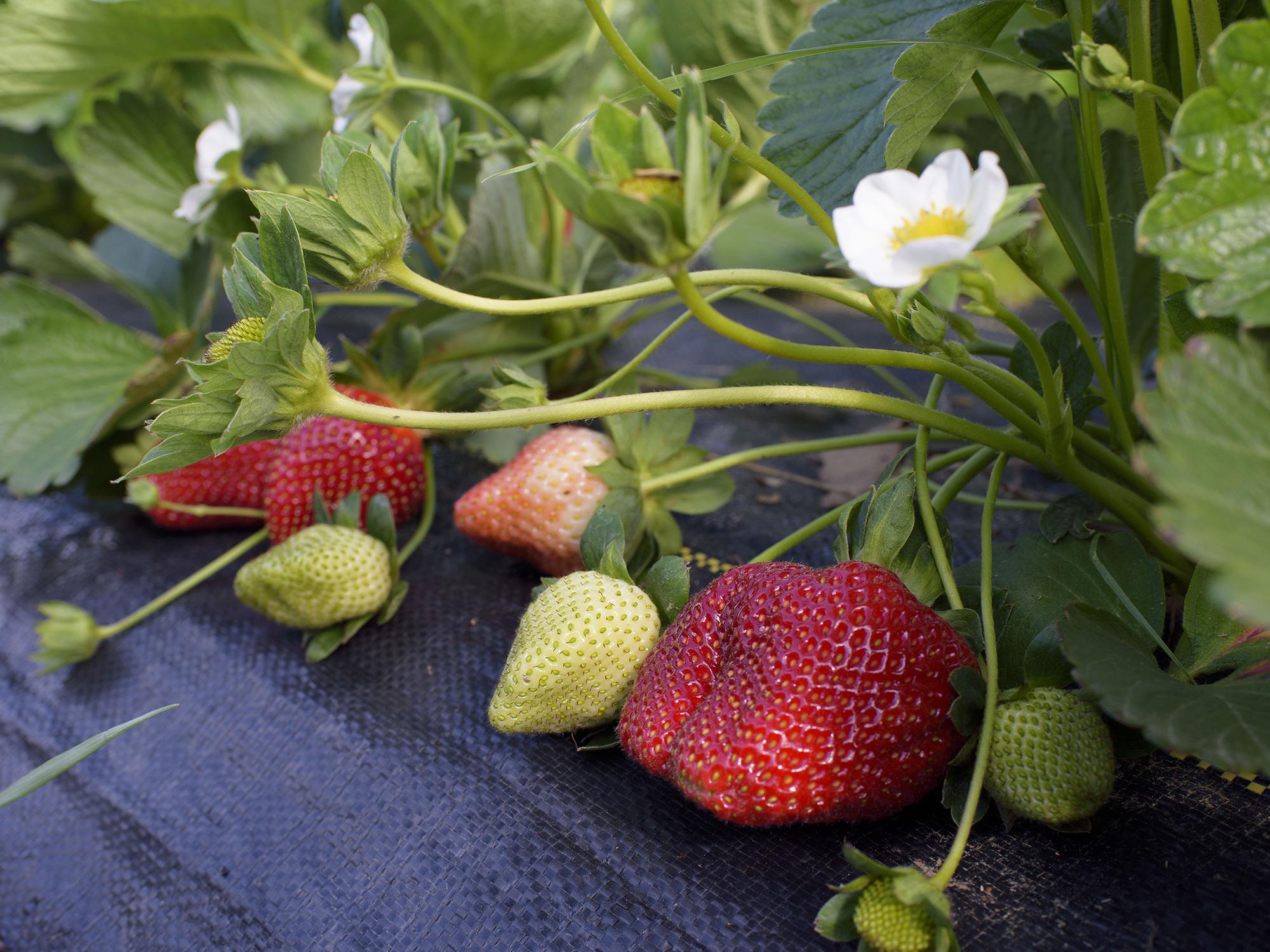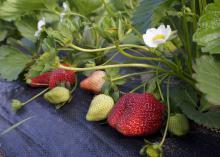Information Possibly Outdated
The information presented on this page was originally released on April 27, 2018. It may not be outdated, but please search our site for more current information. If you plan to quote or reference this information in a publication, please check with the Extension specialist or author before proceeding.
Cool spring limits strawberry growth
MACON, Miss. -- Myron Unruh has no complaints about the quality of his farm’s strawberries. He just wishes more of them would grow.
“We picked some strawberries earlier this week, and they were gorgeous, but we’re getting less than half of what we should be getting,” said Unruh, who owns Lazy U Farms in Macon. “It’s pretty tough right now.”
Eric Stafne, fruit crop specialist with the Mississippi State University Extension Service, said strawberries in south Mississippi are faring slightly better, but soil temperatures in all locations have kept harvests from reaching their full potential.
“Strawberries are being harvested now, and the crop looks fair,” said Stafne, who is based at the South Mississippi Branch Experiment Station in Poplarville. “Depending on location in the state, they could be nearing the end. February was very warm, and that accelerated growth, but a cooler March and April slowed things down.”
As of April 25, extra-large strawberries in 8-pound flats were wholesaling for $17 to $19.50 at the Atlanta Terminal Market, with availability described by the Agricultural Marketing Service as very light.
Commercial growers plant roughly 50-100 acres of strawberries across the state each year. Unruh plants his each October and covers them with frost blankets in December until picking time, which is usually March. A weekend late in that month with freezing temperatures put a halt to his crop’s progress. He increased his strawberry planting from 5,000 to 8,000 plants this year but produced only a third of last year’s harvest.
“This year, I had to cover them up twice,” he said. “The plants were OK and didn’t get frostbite, but the frost stopped them from growing for a while. Last year, we picked well into June. I don’t know if that will happen this year. It looks like some of the plants want to shut down now.”
Stafne said ideal growing weather in fall and winter is cool but not too cold.
“We did have extreme cold temperatures that may have damaged some plants if they were not protected,” he said. “Fortunately, we have not had a long series of frost events this spring.”
Heavy rain, which has been seen throughout much of the state this spring, has a negative effect on strawberry production.
“Rainfall during pollination can hamper fruit set,” Stafne said. “Excessive rainfall can also lead to root rot diseases like phytopthora and fruit diseases like botrytis and anthracnose. Botrytis is a gray mold, and anthracnose shows up as sunken, dark lesions on the fruit.”
Unruh once lost an entire crop to disease but said he’s been fortunate this year as disease and insect pressures have been mostly nonexistent despite slow plant growth.
“That’s one way I’ve been blessed this year,” he said. “That and the quality of the berries keep my head up. Maybe next year we’ll have more.”







